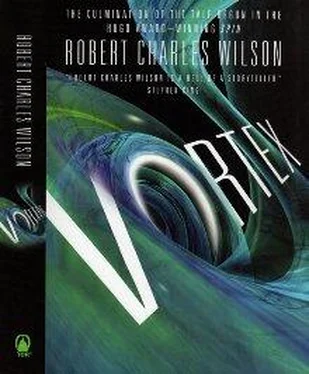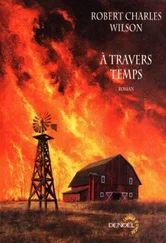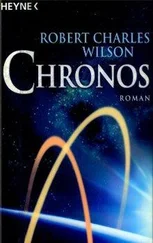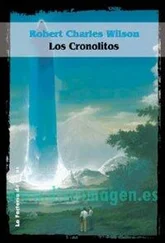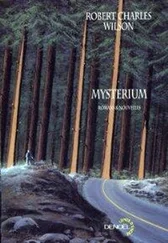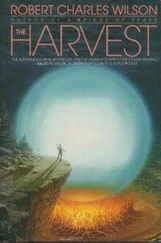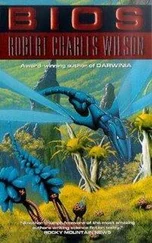The view was uniformly drab until we crossed onto the mainland and approached the Queen Maud Range. There was still a trace of glaciation on the highest peaks of these mountains. The ice was clean, distilled by evaporation from the cesspool of the sea, and in the shadowed slopes it gave back a crisp blue radiance.
Coming down the windward slope into the interior desert we ran into heavy cloud and intermittent snow. I asked Oscar whether it was safe to fly under these conditions. He looked at me as if I’d asked a child’s question. “Yes, of course.”
He was visibly anxious for a different reason. Generations had lived and died in the expectation that Vox would one day meet and merge with the Hypotheticals, but it was Oscar’s generation that was confronting the fulfillment of that prophecy. By joining this expedition he had put himself at the cutting edge of the encounter. That was a spectacular piece of luck, from Oscar’s point of view—whether good or bad remained to be seen.
* * *
Wind and squalls persisted all the way to our landing point.
Maps from my day would have been a poor guide to Antarctica as it existed now. The great ice sheets had disappeared centuries ago, and the Ross Sea and the Weddel Sea had joined to separate East Antarctica from the huge islands off its western coast. Oscar said the place where we landed was in what geological surveys had once called the Wilkes Basin, roughly seventy degrees south latitude. It was a flat, pebbly wasteland.
We suited up as soon as the aircraft touched ground. We wore thick, insulated outer garments to keep us warm and tight-fitting masks that fed us canned air. The ship’s airlock opened onto a landscape that was bleak but not actually ugly. All of Antarctica was a desert, but deserts are often beautiful: I thought of the Equatorian outback, or the deserts of Utah and Arizona, or the old pictures of Mars before it was terraformed, pre-Spin. The terrain here was nearly Martian in its stony lifelessness. The climate was cold, Oscar said, but not cold enough to sustain a permanent icecap, and relatively dry. A late-summer snowfall like this would likely melt off before the day passed. The snow came down in intermittent flurries, drifting into hollows and blurring the outlines of the low, parallel ridges that stretched into the distance.
The sun was a dim incandescence behind the clouds, close to the horizon. We could expect another few hours of daylight but we were fully equipped to operate in darkness. The soldiers loaded portable high-intensity lights and a host of other gear onto self-powered carts with big, articulated wheels. Then they fell into formation and advanced, the civilians following behind.
We navigated by compass. The Hypothetical machines were still invisibly distant. We had landed well outside the perimeter that had been defined by the loss of the drone vehicles. How the attempt to cross that perimeter would affect us and our gear was an open question. “Of course we trust the Hypotheticals,” Oscar said. “But they have autonomic functions just like any other living thing. Events can happen without conscious volition, especially given the hugely different scales of time and space on which they operate.” But none of that seemed as real or substantial as the tug of the wind, the monotonous crunch of gravel under our feet, or the faint stink of hydrogen sulfide that infiltrated our masks.
* * *
We had marched for most of an hour when one of the technical crew, consulting an instrument, called a halt.
“This is the perimeter,” Oscar whispered: the point of proximity beyond which all pilotless drones had mysteriously failed.
Three of the soldiers marched ahead while the rest of us waited nervously. The snow had thinned and there were open patches of sky above us, but daylight was fading fast. The science crew aimed a couple of their lights into the gloom.
The point men halted at a fixed distance, then waved us on. We followed from a prudent distance, announced by sweeping beams of light—we would be hard to miss, I thought, if the Hypotheticals happened to be looking.
But we were well inside the perimeter now, and nothing had happened.
* * *
The temperature dropped with the fall of night. We cinched the hoods of our survival gear tight around our face masks. The wind remained brisk but the squalling snow stopped suddenly, and in the clear air we could make out the shapes of the Hypothetical machines ahead of us, startlingly close. The technicians hurried to aim their mobile lamps.
We had been calling these structures “the Hypothetical machines,” but from the ground they looked less like machines than huge geometric solids. The nearest of them was a perfectly rectangular cube, half a mile on a side and moving at a slow but (barely) perceptible speed. Now that we were close to it I believed I could feel that ponderous motion under my feet, a gentle seismic tremor.
We approached the cube in silence. The soldiers on point were dwarfed by it. The technicians began to angle up their lamps, playing the beams against the nearest vertical face, a featureless surface the texture of sandstone. Because of its regularity it was hard not to think of this thing as an absurdly large building, but it was a building without windows or doors, as enigmatic as a sealed pyramid.
For a while we did nothing but stare at it. Oscar said it must already have detected our presence; but if it did, it failed to react in any obvious way. Then the technical crew got down to business. They erected tripods and secured their lamps on them; they unpacked sensors and recording devices and anchored them in the pebbly, cold soil. A steadily increasing number of fiercely bright beams divided the desert into a quilt of light and dark.
On the plain beyond the cube, scattered over a couple of kilometers, were a half dozen objects of similar size and different but equally simple shapes—huge cylinders, octagons, truncated spheres, conical sections. Some were sandstone-colored, like the cube; others were black, cobalt blue, obsidian black, cadmium yellow. Any one of them could have enclosed a small city, and all of them were creeping at the same patient speed toward the distant mountains and the sea. “So immense,” Oscar said breathlessly, “these objects, but such an insignificant fraction of the whole body of the Hypotheticals.” The stark light cut shadows into his mask and made him look like a timid animal peering out of a hole. “It would be easy to commit the impertinence of fear.”
Way too easy, out here on the polar desert of the planet that had given birth to the first human beings and had become an unmarked grave for billions more. While the scientific crew activated sensors and surveying devices, I walked without Oscar’s permission (but he scurried after me) to within a few hundred yards of the base of the cube.
It was old. It wasn’t weathered or cracked, and for all I knew it might have been manufactured a day or an hour ago, but it felt old—age seemed to radiate from it like cold air from an icefield. Inches ahead of it the thin layer of new-fallen snow was disappearing from the desert floor, sublimating into the night air.
“The Hypotheticals are endlessly patient, Mr. Findley. They’re older than most of the stars in the sky. To be so close to their work… this is a sacred moment.”
We all wore earpieces to facilitate communication. I had turned down the volume on mine—the few simple Voxish words I had learned weren’t much use here—but we both heard a burst of excited chatter erupt from the technical crew. Two beams of high-intensity light swept upward.
The beams diffused into what appeared to be a pale cloud at the top of the cube. Snow or mist, I thought; but no—elsewhere, the sky was clear. The cloud appeared to be boiling off the top of the cube itself—and the other, more distant objects were generating similar clouds, pale mists that sifted down gently despite a wind that should have dispersed them.
Читать дальше
